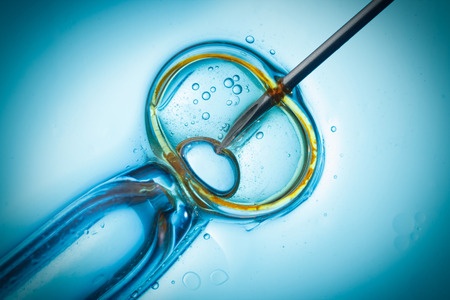Tools developed by the University of Aberdeen which help couples to predict the chances of having a baby following IVF treatment have now been launched in the US.
Two calculators – one which calculates the chances of having a baby over one or more complete cycles* of IVF treatment from the point before just starting treatment and another which looks at the chances from the point of the first fresh embryo transfer, have assisted thousands of UK couples in managing their expectations of treatment success.
Now researchers have now turned their attention to the United States where around two percent of all babies born are conceived through IVF treatment.
Using fertility data collected by the Society for Assisted Reproductive Technology (SART), which includes over 90% of reported IVF treatment cycles in the United States, the Aberdeen researchers were able to build calculators specifically tailored to the national population.
These have been made freely available at https://w3.abdn.ac.uk/clsm/SARTIVF/ with the UK calculators available at https://w3.abdn.ac.uk/clsm/opis.
Dr David McLernon of the University’s Institute of Applied Health Sciences leads the statistical analysis.
He said: “Our free calculators help to shape couples’ expectations allowing them to plan their treatments more efficiently and to prepare emotionally and financially.
“The UK models are used by between 3,000 to 5,000 couples each month, helping to inform how successful their treatment might be.
“Our previous IVF prediction calculators were primarily for use by UK couples who are starting treatment. Together with the Society for Assisted Reproductive Technology, we have developed new calculators tailored to couples and treatment practices in the USA.”
The calculators consider specific characteristics of couples and treatment information to predict cumulative chances over and up to three IVF (in vitro fertilisation) or ICSI (intracytoplasmic sperm injection) cycles.
The research team developed two separate calculators – a pretreatment calculator which is able to predict the likelihood of live birth before embarking on IVF treatment, and a posttreatment calculator to revise the predicted chance of having a baby before starting a second complete cycle of IVF, This second calculator uses updated information learned since the first complete cycle and aims to help those who have previously experienced disappointment to better understand their future chances of success.
Dr Mclernon added: “The posttreatment calculator is particularly novel as it revises predictions for couples embarking on their second round of IVF whose first round was not successful.
“These are very difficult decisions putting huge strain both emotionally and financially on couples and our calculators offer a simple way for them to gain a better understanding of their personalised chances of successful treatment.
“For example, before treatment, a 30 year old woman with unexplained infertility, a BMI of 25, and who has never had a baby, has a 63% chance of having a baby from the first complete cycle of IVF and a 89% chance over three complete cycles.
“If however, this round of treatment did not result in a baby and the woman plans to start a second complete cycle of IVF, then she can use the posttreatment calculator. This calculator also requires the number of eggs that were collected in her first cycle to inform the prediction. If the same woman had 6 eggs collected, then her chance of having a baby in the second complete cycle is now 41%.
“While nothing can ever be guaranteed, our calculators are helping couples to better understand the range of choices that they face and the impact that these factors have on success rates for IVF. This information is difficult to get to grips with but our calculators allow it to be presented to them in a clear and concise way so that couples can understand their likely chances of successful treatment.”
This research was funded by the Society for Assisted Reproductive Technology (SART)


